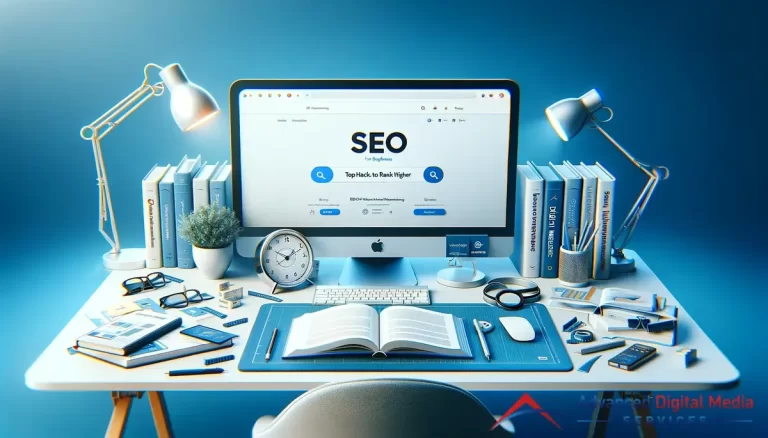In today’s digital age, having a solid online presence is essential for any business looking to succeed. However, with millions of websites vying for attention, standing out from the crowd can be daunting. This is where the power of SEO and UX design comes into play. By combining these two strategies, businesses can improve their visibility in search engine results pages (SERPs) while providing users with a seamless and engaging experience on their website.
In this blog, we’ll explore the key strategies for unlocking the power of SEO and UX design and how they can help your business achieve long-term success in the online marketplace. Whether you’re a small start-up or a large enterprise, implementing these strategies can give you the competitive edge you need to succeed. So, let’s dive in and discover the power of SEO and UX design for your business.
Understanding SEO and UX Design
SEO involves optimizing a website to improve its visibility and ranking in search engine results pages (SERPs) to attract organic traffic. It includes keyword research, on-page and off-page optimization, and creating high-quality content.
UX is the overall satisfaction and experience a user has when interacting with a product or service, such as a website. It focuses on ease of use, design, accessibility, and user emotions. Integrating SEO and UX can lead to a successful website that meets user needs and business goals.
How User Experience Affects SEO
To boost SEO performance through UX design, it’s essential to combine them into a cohesive strategy. In this section, we’ll explore how SEO and UX design can work together to create a seamless user experience that meets users’ needs and improves search engine rankings. We’ll discuss the importance of creating user-friendly and optimized content for search engines, as well as how to design a website that is visually appealing and intuitive while still adhering to SEO best practices.
By combining the power of SEO and UX design, you can create a website that not only looks great but also performs well in search engine results pages and meets the needs of your users.
Here are some examples of how UX affects SEO:
- Improved User Experience – Integrating UX design principles such as clear layout, easy navigation, and fast loading times can improve user engagement and keep them longer on your website. Optimizing your site for search engines improves visibility and attracts more users.
- Better Search Engine Rankings – Search engines use various factors to determine a website’s relevance and authority. By integrating SEO best practices, such as keyword research, on-page optimization, and off-page optimization, you can improve your website’s search engine rankings and attract more traffic.
- Increased Conversion Rates – A website optimized for search engines and users can convert visitors into customers. Incorporating UX design principles like clear call-to-action and mobile optimization can improve conversion rates and generate revenue.
- Competitive Advantage – Integrating SEO and UX design can give you a competitive advantage over other websites in your industry. By creating a website that is optimized for both search engines and users, you can stand out from the crowd and attract more traffic, engagement, and conversions.
Integrating SEO and UX design is crucial because it can help you create a website optimized for search engines and users, resulting in improved user experience, better search engine rankings, increased conversion rates, and a competitive advantage in your industry.
Strategies for Optimizing Website Design and Navigation
Several UX design factors can improve SEO performance. Optimizing website design and navigation is essential to integrating SEO and UX design. Here are some strategies for optimizing website design and navigation:
- Simple and Intuitive Navigation – Make sure your website’s navigation is easy to use and intuitive, allowing users to find what they want quickly. Consider using clear labels and categories to organize your content and avoid overwhelming users with too many options.
- Mobile Optimization – With more and more users accessing the internet from mobile devices, ensuring your website is optimized for mobile use is essential. This includes using responsive design, minimizing page load times, and creating a mobile-friendly navigation menu.
- Page Speed – Page speed is important for SEO and user experience. Slow-loading pages can increase bounce rates and decrease user engagement. Optimize your website’s images, reduce server response time, and leverage browser caching to improve page speed.
- Visual Design – The visual design of your website plays a significant role in user experience. Use a clean, professional design that is easy on the eyes and effectively communicates your brand message. Ensure your website is visually appealing using high-quality images, consistent color schemes, and easy-to-read fonts.
- Accessibility – Accessibility ensures all users can access and use your website. Consider incorporating features such as alt tags for images, video subtitles, and keyboard navigation for users with disabilities.
- High-quality content – Creating high-quality content that meets the needs of both users and search engines is essential for success. This involves identifying relevant keywords and incorporating them into your content in a natural, user-friendly way while ensuring that your content is informative, engaging, and valuable to your target audience.
Optimizing website design and navigation allows you to create a user-friendly website that is easy to use and navigate, leading to increased user engagement, better search engine rankings, and improved conversion rates.
Key Takeaway
Integrating SEO and UX design is crucial to building a successful website. Prioritizing user experience by optimizing on-page and off-page factors, creating simple navigation, using responsive design, and creating high-quality content can increase engagement and conversions. Combining SEO and UX design can provide a competitive edge, and continually refining the approach can help businesses stay ahead in delivering a website that pleases users and search engines. Understanding the power of SEO and UX design empowers web designers to create websites that offer the desired results for their clients.
Leverage the power of SEO and user experience with ADMS!
Let Advanced Digital Media Services take your website to the next level. As a web designer at Edwards Co., ADMS leverages the power of SEO to enhance user experience. The team will create a website for your business that looks great and delivers a seamless user experience optimized for users and search engines. By integrating SEO best practices with UX design principles, ADMS can help your website stand out and drive actual results.
Improve your online presence today. Contact ADMS to start unlocking the power of SEO and UX design for your website.





